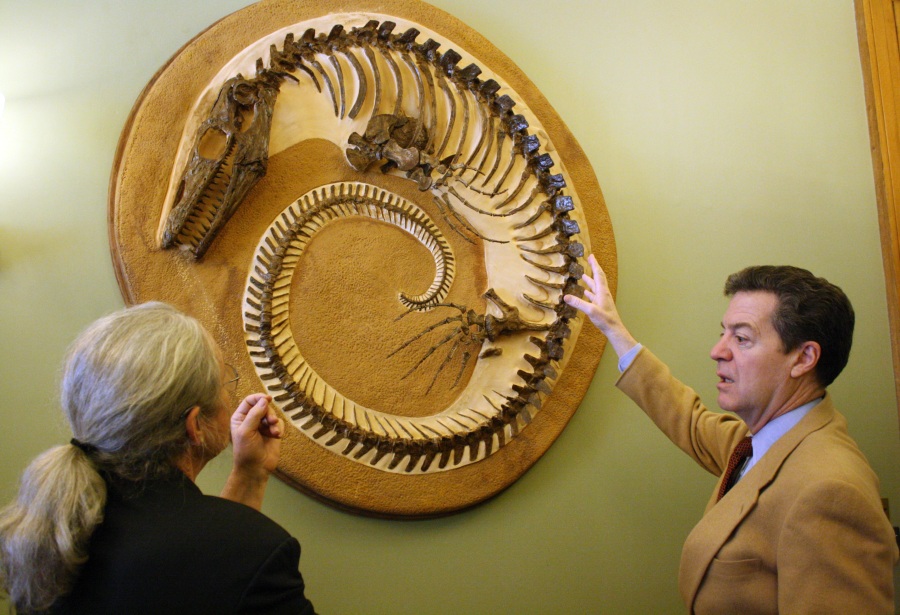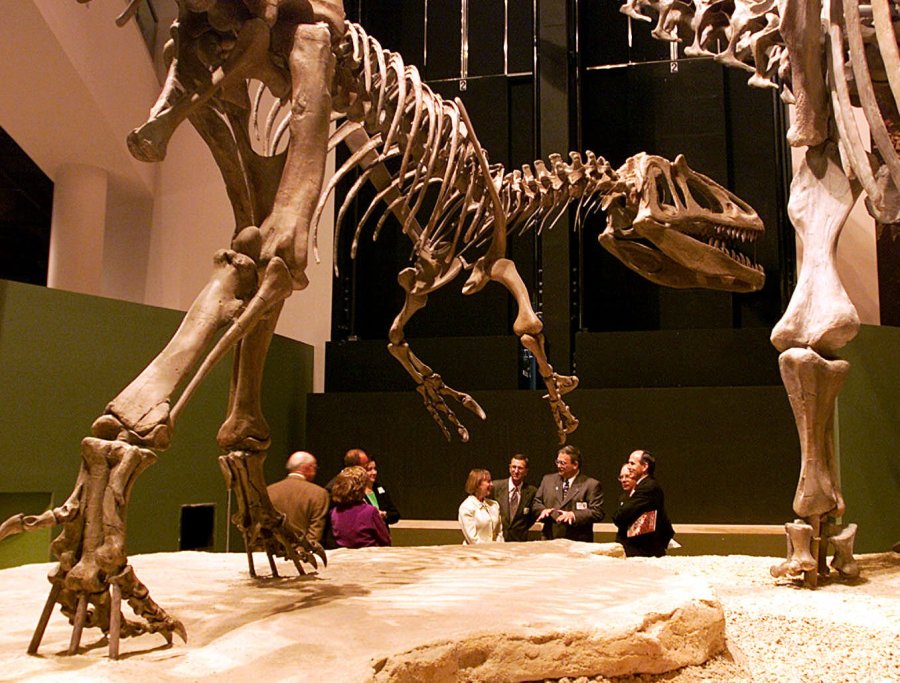Humans’ fascination with dinosaurs goes back at least 2,000 years to Chinese writings describing what were thought to be massive dragon bones. In the 17th century, an English museum curator discovered a large thigh bone he posited was from a human giant. The first scientific designation of a group of animals called dinosaurs came about in the 1840s. 1993’s blockbuster “Jurassic Park” drove our 20th-century obsession with dinosaurs into overdrive. And with each new fossil discovery and dinosaur movie release, our intrigue with these prehistoric predators only grows.
Every American state has searched its soil for dinosaur fossils, but some states have more old dinosaur bones than others. Anyone lucky enough to stumble on some is likely to strike pay dirt: The world’s most complete T. rex skeleton fetched a record-setting $31.8 million in a 2020 auction.
To determine which states have the most dinosaur fossils, Stacker consulted the Paleobiology Database, a non-profit public resource that brings together fossil records from research institutions around the world. Data is current as of May 2022. Stacker pulled all records labeled “Dinosauria” (the dinosaur clade) and sorted them by state. It is important to note that these records do not comprehensively reflect all dinosaur fossil records in the U.S., but rather represent a sample via the fossils available in public collections. You can see their original article regarding all 50 states here.
We’ve taken their research data and pulled the dinosaur fossil information found within the Four States.
#4. Missouri
– Total fossils recorded in PBDB: 4
– Genus with the most fossils: Hadrosauridae (3 fossils)
– Time period with the most fossils: Campanian (4 fossils)
The duck-billed dinosaur discovered in 1942 near Glen Allen, Missouri, became the state symbol. The state is also home to a plethora of fossils from the American Mastodon, which earned a namesake state park in Eastern Missouri. Visitors can also check out famous dinosaur bones, a piece of meteorite, mammoth tusks, and other fossils at the Ed Clark Museum of Missouri Geology in Rolla.
#3. Arkansas
– Total fossils recorded in PBDB: 12
– Genus with the most fossils: Hesperornis (2 fossils)
– Time period with the most fossils: Albian (9 fossils)
Foot bones of a bipedal dinosaur were discovered in 1972 in Sevier County, proving prehistoric life wandered the southern state. By 2017, the Arkansaurus fridayi became the official state dinosaur. Dinosaur tracks were additionally discovered in the early ‘80s at the Briar Site, a gypsum quarry in southwestern Arkansas.
Another gypsum quarry near Nashville, Arkansas, yields thousands of huge dinosaur tracks—most likely from a plant-eater roaming in the Jurassic period.
#2. Kansas
– Total fossils recorded in PBDB: 57
– Genus with the most fossils: Hesperornis (4 fossils)
– Time period with the most fossils: Coniacian (11 fossils)
Kansas rancher Warren Condray found fossils in 1955 that were eventually named the state dinosaur and named after him. Many parts of the prehistoric creature, Silvisaurus condrayi, were unearthed over time. To date, the skull, back, tailbone, neck, jaw, teeth, and more, all under the authority of the Kansas University Biodiversity Institute Natural History Museum, have been unearthed. The state does not keep the collection on constant display.

#1. Oklahoma
– Total fossils recorded in PBDB: 59
– Genus with the most fossils: Tenontosaurus (6 fossils)
– Time period with the most fossils: Tithonian (29 fossils)
Oklahoma’s state fossil—a Saurophaganax Maximus skull—was discovered in the 1930s in Cimarron County. The fossil comes from a 40-foot-long, carnivorous dinosaur from the Jurassic Period. Oklahoma is home to other fossils too, including 10,000-year-old mammoth relics of tusk and teeth found at Quartz Mountain State Park.

The Sam Noble Oklahoma Museum of Natural History in Norman, which has the most massive collection of dinosaur artifacts outside the Smithsonian, offers digging expeditions for locals and tourists.

